Video editing is the talk of the town, more so with the YouTube and influencer community growing unimaginably over the past two years. Therefore, if you are an integral part of this community or simply looking to edit some raw footage on your secondary device, looking at the video editing tablets might help.
Tablets for video editing can cater to the professional video creator in you. Or it might be a good choice if you are a hobbyist or even a beginner trying to learn the tricks of the trade. Regardless of the skill set and requirement, it is important to focus on a few key attributes, including the display quality, processing setup inclusive of the GPU, connectivity suite, battery life, and portability.
However, finding the best device for video editing isn’t as easy despite knowing which features to consider. It is possible that you may end up with a tablet that doesn’t pack a reliable octa-core processor and a top-shelf GPU. Or you might end up compromising with the least portable option around.
But then, I have put together a list of the top 7 tablets and a few alternatives to help you with video editing. What’s promising is that each of these tablets can run the top-rated video editing apps like Premiere Pro, KineMaster, InShot Editor, Final Cut Pro, LumaFusion, and more, without experiencing any lag whatsoever.
Contents
7 Best Tablets for Video Editing in 2023
It is often difficult to zero in on the tablet operating systems while picking up the best video editing tablet. Throughout this discussion, I shall talk about every OS and the relevant tablet that can help you run the preferred video editing application.
Each tablet on the list runs a handful of video editing apps to perfection, and that is exactly what I am going to explore in detail. Plus, you can even pick a device based on the budget and skillsets, as I shall kickstart the review by discussing the premium variants right at the beginning. So let’s dig right in!
1. Best Overall: Microsoft Surface Pro 7
If you are a professional video editor looking for a secondary device to manage tasks like video reframing and real-time effects, the Microsoft Surface Pro 7 is the go-to computing device. And even though the Pro 6 is quite a robust device, Pro 7 edges past it, courtesy of the Wi-Fi 6 wireless standard.
Why is it suited for video editing?
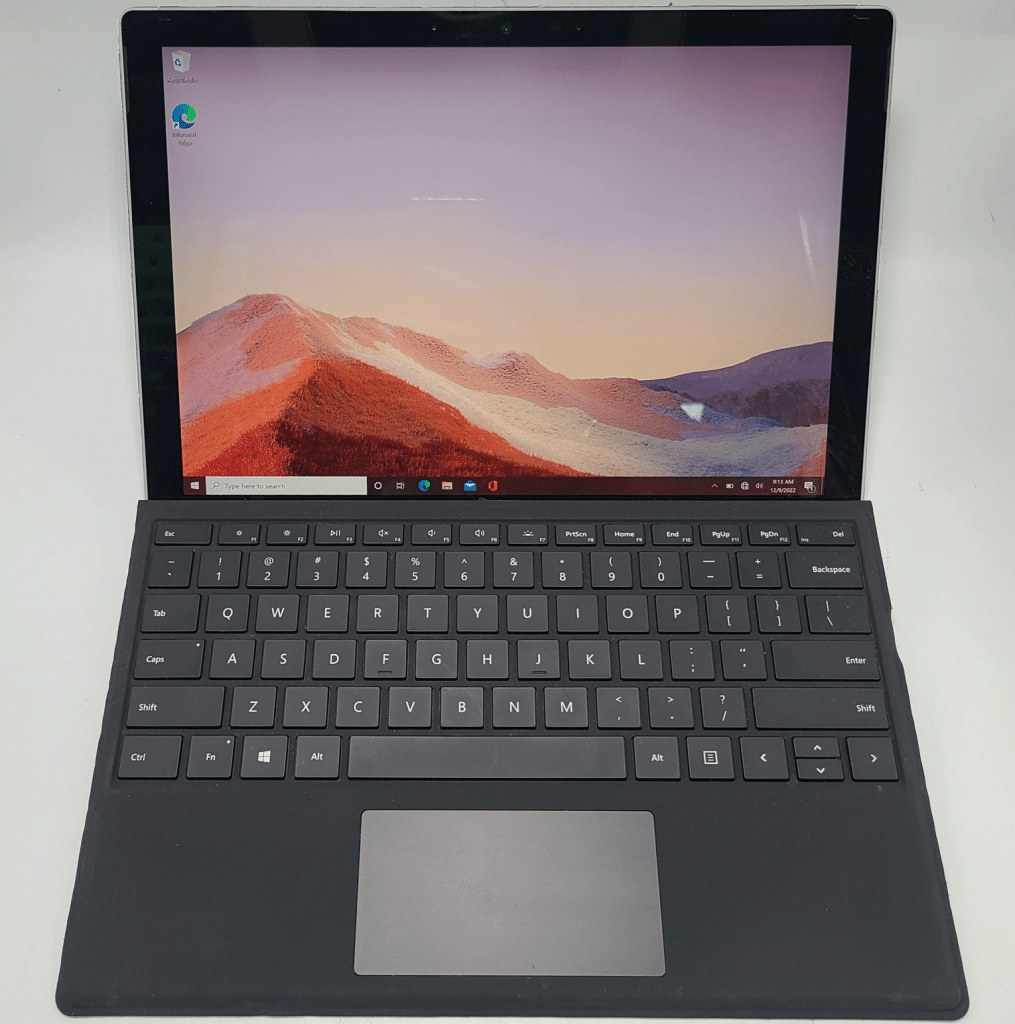
Well, if you are into those double exposure patterns and support for 4K video editing, the 12.3-inch PixelSense screen seems like a good fit. Coming to the overall resolution, you get 2736 x 1824 pixels followed by a 3: 2 aspect ratio. Plus, the 69% DCI-P3 color gamut also comes in handy when color-based editing is concerned.
Powering the same is the 10th gen Intel Core i5 chipset. Plus, you get the Iris Plus graphics card to help you with visual rendering. The 8GB RAM lets you experience decent multitasking performances, whereas the 256GB SSD lets you save the Windows OS and relevant apps like Premiere Pro without issues.
As far as compatibility is concerned, you get support for VideoPad that even assists with 360-degree creation and commercial editing.
Design & Connectivity
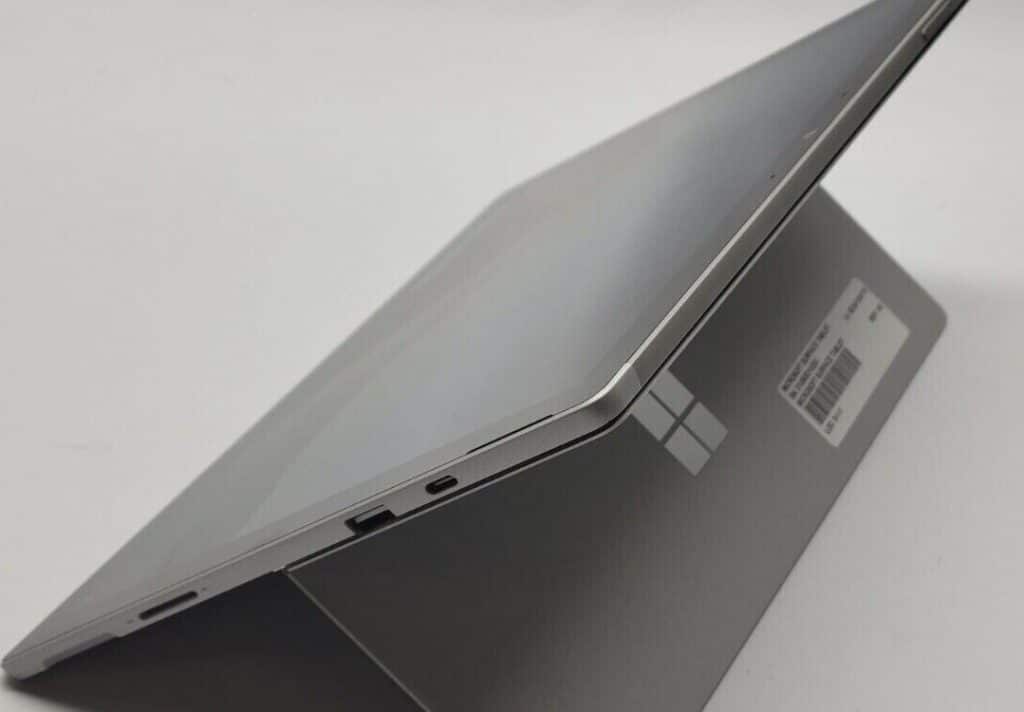
The Pro 7 is made of metal, measures 11.5 x 7.9 x 0.33 inches, and weighs 1.70 pounds. And while some might consider it a tad thicker than usual, it more than makes up with the fastest possible wireless standard, multiple USB Ports, BT 5.0, and a Surface Connect Port in play.
Battery & Other Features
Nothing works better than the 10.5-hour battery life that lets you use the Pro 7 even outdoors. And if you are interested in clicking your own pictures and videos, there is an 8MP back camera in place followed by a 5MP front shooter.
Conclusion
The Surface Pro 7 is undoubtedly the best tablet for video editing. And the excellent Intel-powered processor ensures that the video rendering and editing performances are at par with any professional Windows laptop, a feature that separates it from the rest.
- Fast SSD
- Wi-Fi 6 standard
- Sharp display
- Feature-packed processing setup
- Accessories need to be purchased separately
- Bulkier than usual
2. Best iPad for Video Editing: Apple iPad Pro
Every professional video editor should try out the Apple iPad Pro at least once, provided you want to experience a whole new world of special effects, b-rolls, and whatnot. Also, the new iPad Pro packs a stronger punch as compared to the older variant, courtesy of the M1 chipset that outwits the Bionic processor by a significant margin.
Why is it suited for video editing?
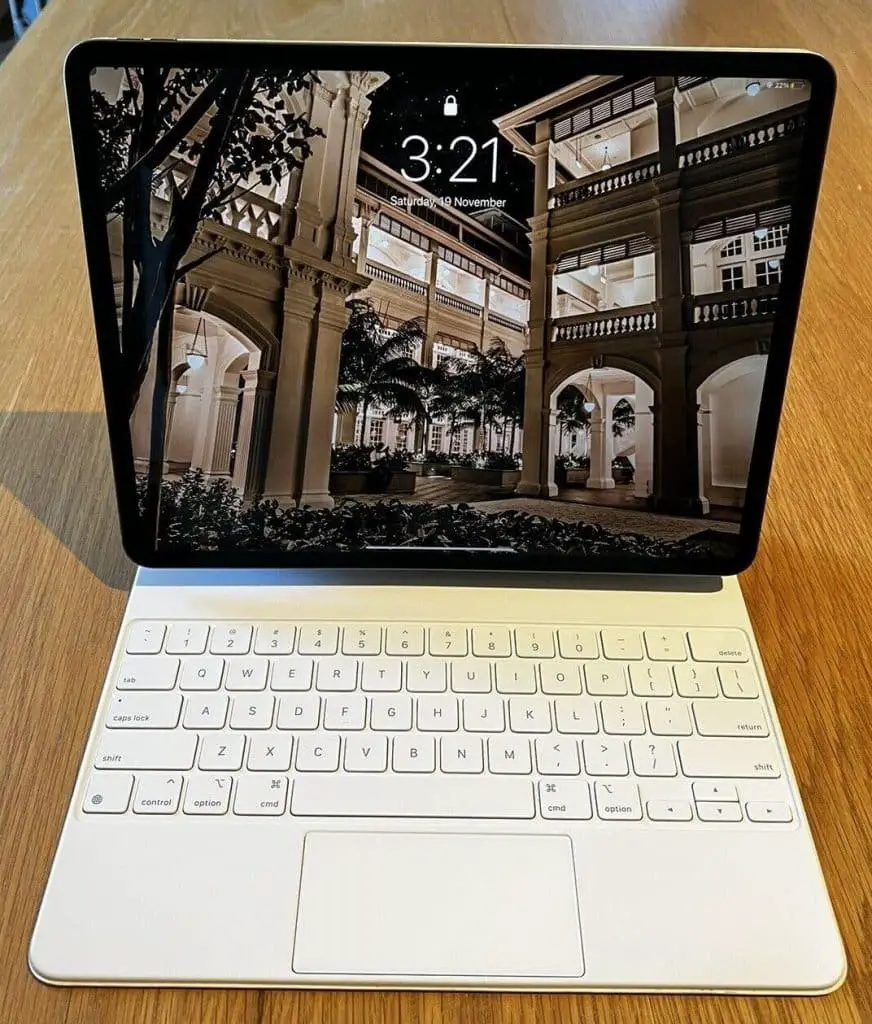
What makes the iPad Pro good for video editing is the sizable, 12.9-inch screen. The Liquid retina panel exhibits an overall resolution of 2048 x 2732 pixels, which is a good enough ballpark for 4K video rendering. Not just that, the 4: 3 aspect ratio makes the interface come through as a responsive one.
As far as the processing support is concerned, the iPad Pro runs M1 SoC right out of the box. Amplifying the relevant specs like color correction, slow motion, and more is the 7-core integrated GPU. Apple also features 8GB of high-speed RAM and 128GB of non-upgradable storage space.
Coming to compatibility, this device works rather well with the iMovie application, known for the lucid interface, LumaFusion, for its multi-track editor and lossless export, and the Filmmaker Pro for advanced specs like more than 15 transitions, audiometer, and 30 filters.
Design & Connectivity
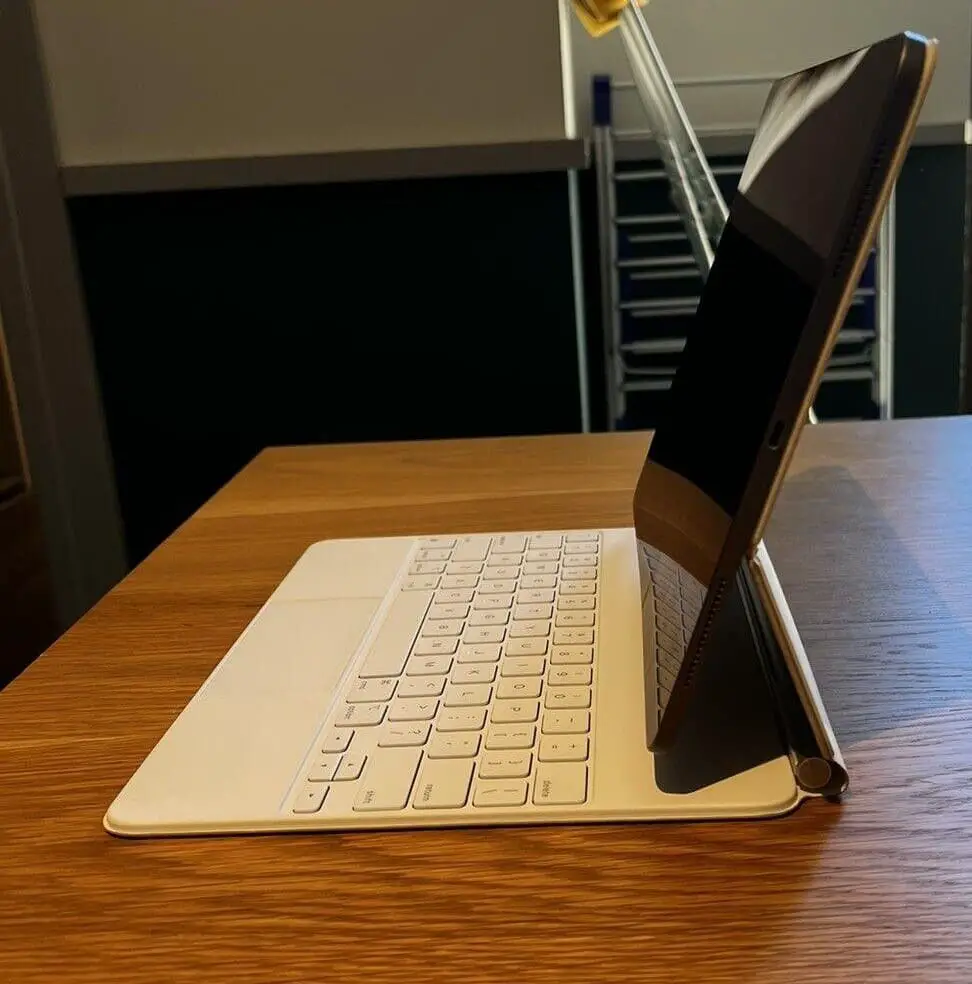
As far as the aesthetics are concerned, the iPad Pro comes across as a metal-clad tablet, measuring 11.05 x 8.46 0.25 inches. The minimalist device weighs 1.50 pounds and features an extended connectivity suite, led by Wi-Fi 6 support, Bluetooth 5.0, and Thunderbolt 4 port for fast charging and ultrafast data transfers.
Battery & Other Features
Apple stands by its 10-hour battery backup promise. However, the iPad Pro is one of the few devices that allows you to record the best videos and then edit them, courtesy of the three-camera rear setup led by one PDAF shooter. And there is a reliable 12MP front shooter as well to make quick, professional calls as productive as possible.
Conclusion
The iPad Pro 12.9 is a fun device to own as it lets you maximize your video editing potential. However, it is the M1 chipset and 8GB RAM that make it faster than any other device in the existing space, especially when video rendering and editing performances are concerned.
- Ultrafast chipset
- Supports most premium video editing apps
- Bright screen with high peak brightness
- Excellent battery life
- Pricey
- Apple Pencil needs to be purchased separately
3. Best Android Tablet: Samsung Galaxy Tab S7+
The Galaxy Tab S7+ is one of the top-shelf Android tablets, provided you are looking for a tablet to edit videos for social media and other trivial and moderately demanding tasks. And as compared to the TFT panel exhibited by the standard Galaxy Tab S7, the Tab S7+ boasts a best-in-class Super AMOLED display.
Why is it suited for video editing?
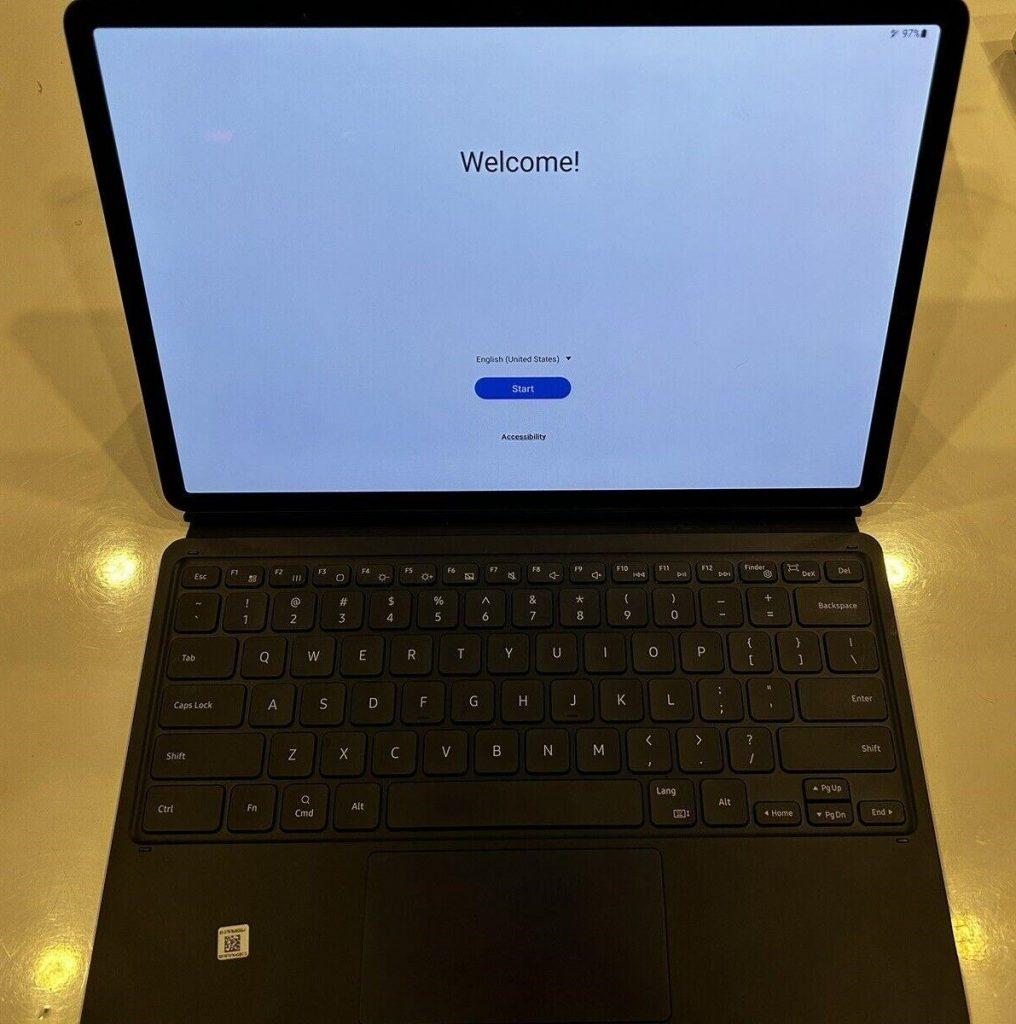
The Galaxy Tab S7+ is one of the best-rated large-screen tablets, led by the 12.4-inch Super AMOLED panel. Complementing the same is the 16:10 aspect ratio for perfect video editing, trimming, and rendering experience. On top of that, the resolution is fixed at 2800 x 1752, which in turn takes care of the visual angles, even outdoors.
Powering this tablet is a Snapdragon 865+ chipset, which is more than capable of handling video editing resources like effects, fast and slow-motion rendering, merging clips, and more. Assisting the same is 6GB RAM, which is good enough for adding sound and visual effects to multiple videos without terminating processes.
Storing the editing videos and the Android 10 OS is now easy with the 128GB storage unit in place. And if you can, you can easily upgrade the same by 1TB to make additional room.
Design & Connectivity
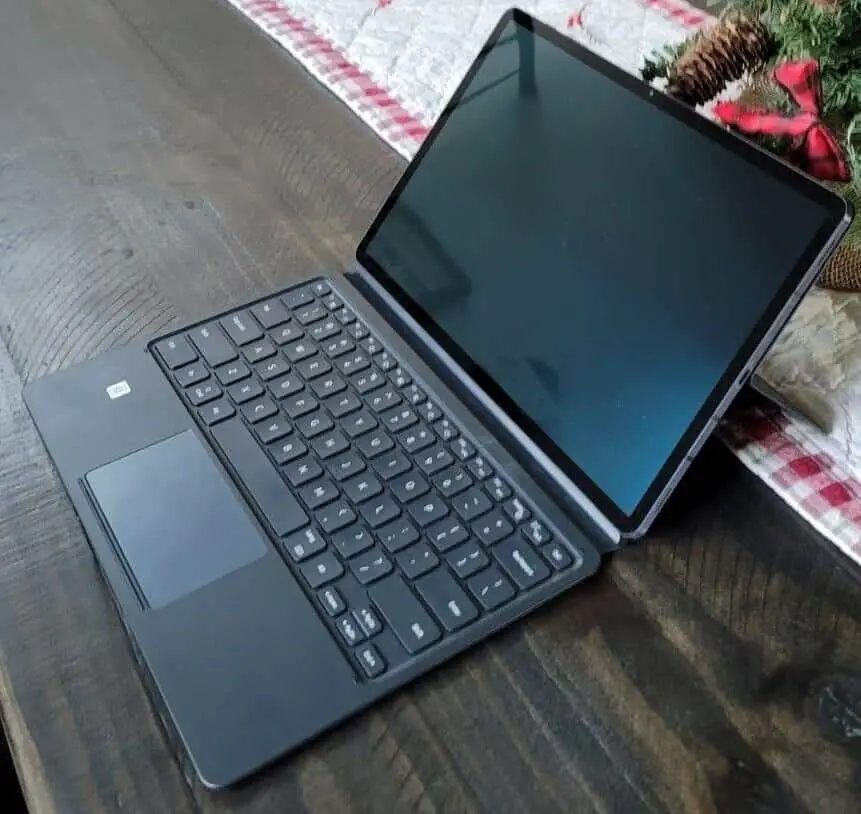
The Tab S7+ is a premium tablet when aesthetics are concerned. While it weighs a paltry 1.27 pounds, the dimensions at 11.22 x 7.28 x 0.22 inches ensure that it is slimmer than the iPad Pro. Connectivity-wise, there is Wi-Fi 6 wireless standard to rely on, followed by Bluetooth 5.0 and a Type-C port for fast charging.
Battery & Other Features
The 15-hour battery backup is a highlight. Plus, Samsung makes way for a dual-camera setup in the rear, followed by a standard 8MP selfie shooter to help you attend professional calls and capture selfie videos. And the nifty and quick fingerprint scanner sweetens the pot further for a standard user.
Conclusion
The Tab S7+ is the best Android tablet for video editing, mostly for managing social media content. However, in terms of performance and battery life, it outwits most of the other products on the list, and only the iPad Pro can actually stand up to the resourcefulness on display.
But then, if the S7+ seems a tad pricey, the Tab S7 FE can be a good alternative, considering the 12+ hours’ worth of battery backup, a comparable 12.4-inch screen, a bigger storage unit at 256GB, and an ever-reliable Octa-Core processor from Qualcomm.
- A massive chunk of RAM
- Storage is upgradeable by 1TB
- The display is out of the world
- Reliable chipset
- Excellent battery life
- Not compatible with most android and Windows editing apps
- Pricey
4. Best with 2K Display: Lenovo Tab P11 Plus
Do you need an Android tablet with an excellent display and balanced specs-sheet? Look no further and get yourself the Tab P11 Plus from Lenovo. It features the best specs you can find in the sub $300 tablets.
Well, if you are a religious KineMaster user, there isn’t a better tablet around than the Lenovo Tab P11 Plus. I even tried to use KineMaster on the dated Lenovo M10 but liked the P11 Plus better, courtesy of the brilliant 2K display, quad-speaker setup, improved processor, sizable storage space, and out-of-the-box upgradability.
Why is it suited for video editing?
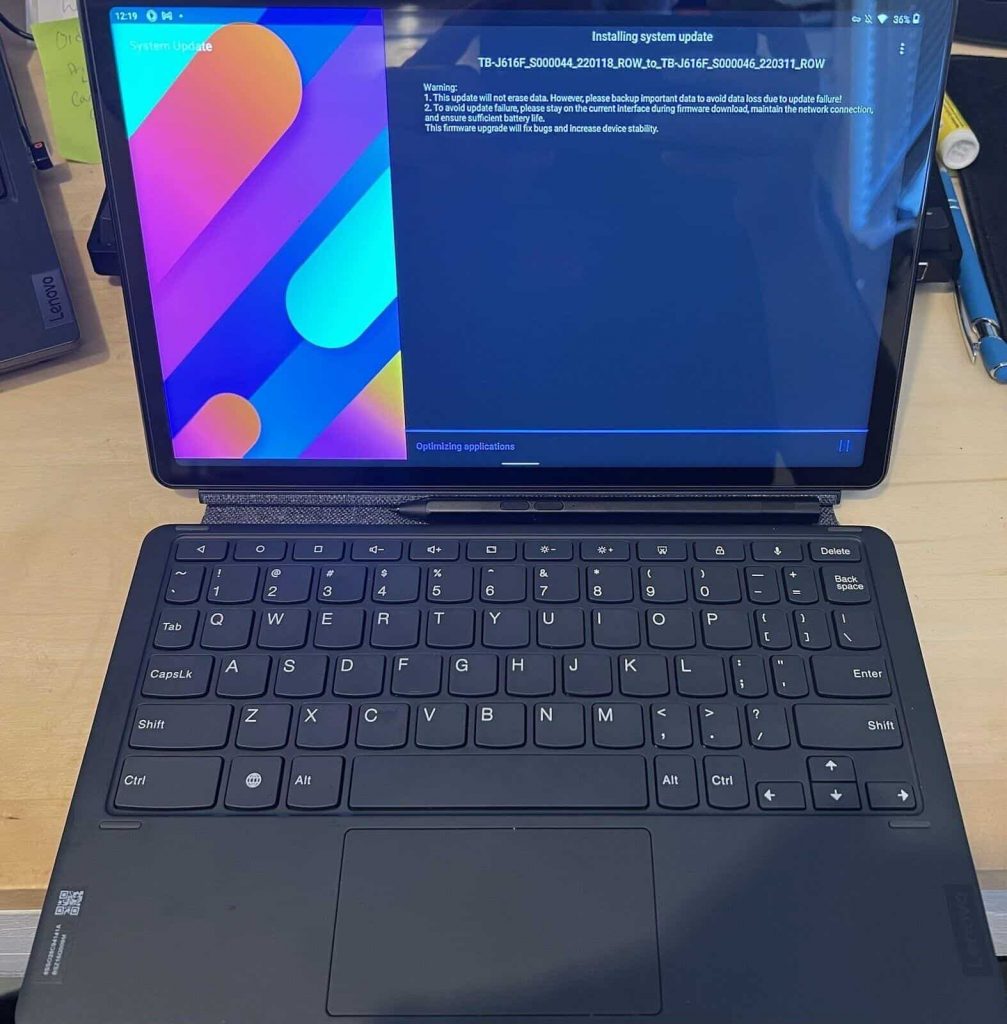
Firstly, it is the 11-inch 2K screen that makes quite a case for itself. Next, you have the peak brightness level of 400 nits to help you manage tasks outdoors. Not to mention the innovative aspect ratio of 5:3 that makes video viewing fun on the IPS panel.
MediaTek’s Helio G90T is a powerful processor capable of handling every KineMaster-specific task with ease. Starting from trimming clips to adding layers across frames, the G90T is worth all the accolades. Also, it comes integrated with an ARM Mali GPU to help you with Chroma keying, mode blending, and more.
The processor gets a lot of support from the 4GB RAM. Plus, you can store processed videos in the 128GB storage unit.
Design & Connectivity
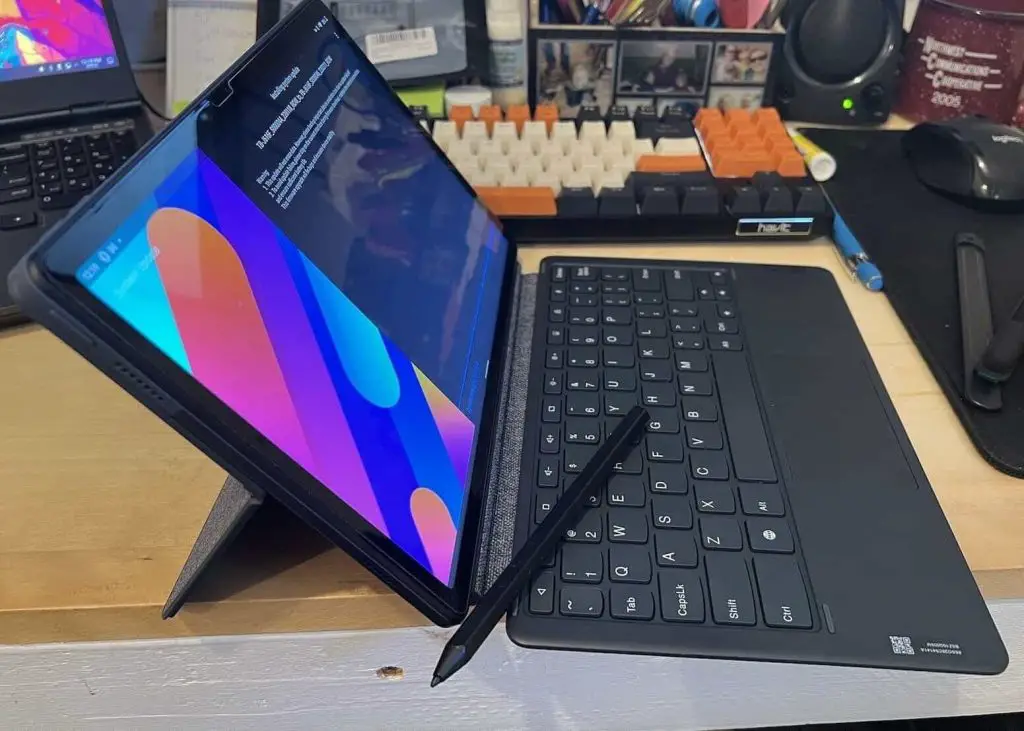
The P11 Plus from Lenovo is adequately slim at 10.17 x 6.42 x 0.30 inches. And it is one of the lightest tablets around at 1.08 pounds. Connectivity-wise, you get access to a Type-C port and Wireless AC networking standard, along with BT 5.0.
Battery & Other Features
Lenovo matches up to the S7+ and ends up offering 15 hours of steady backup. Coming to the camera setup, the 13MP front shooter lets you record videos with ease. And if you are into selfies and relevant videos, the 8M wide-angle front shooter is quite a reliable option to consider.
Conclusion
Overall, Lenovo Tab P11 Plus is easily one of the best tablets for editing videos and handling requirements that include using LUT filters and 3D transitions using KineMaster. And it is the battery backup that separates it from other products across the retail space.
- Bright screen
- Over 15 hours of backup
- Sizable storage support
- Latest android variant
- Heats up a bit
- Lacks Wireless AX standard
5. Best for Portability: Microsoft Surface Go 2
Not many Windows-powered devices are portable enough. Surface Go 2 changes that with its ultralight form factor and a power-efficient processor that is heat agostic, to say the least. Also, the Surface Go 2 edges past the older Go, courtesy of a brighter screen and a higher PPI.
Why is it suited for video editing?
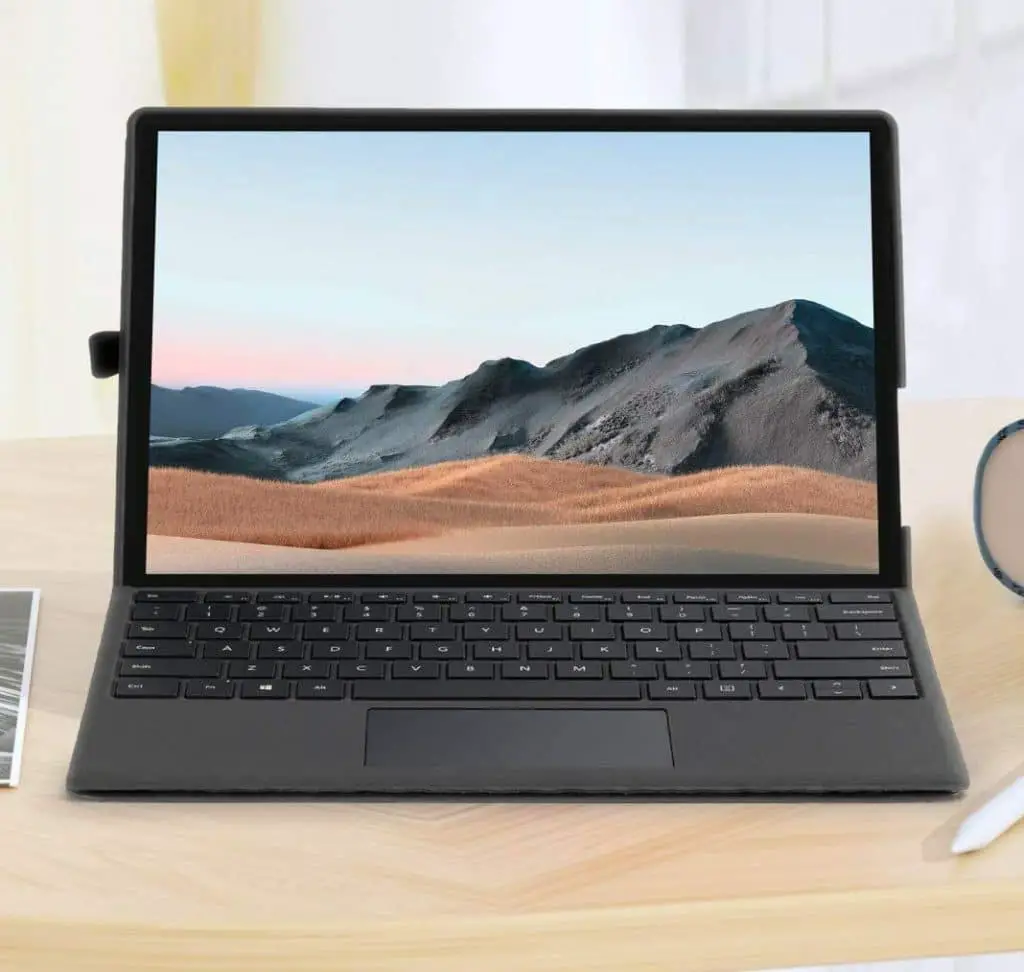
The 10.5-inch Full HD display is quite a compelling reason to use it for video editing on the go. The 3:2 aspect ratio is also great for getting the best visuals out while editing. Not to mention other display-specific features that include an overall resolution of 1920 x 1280 and a gorilla glass panel to immunize the screen against drops and other threats.
The Intel Core M3 chipset is one of the better SoCs in town, led by 8GB RAM and the Intel UHD integrated graphics. The existing processing setup is more than capable of handling important video editing tasks like adjusting speed, controlling volume, and even implementing a handful of 4K resources.
Storage-wise, 128GB SSD is quite a useful addition. And the storage module ensures that the apps and Windows 10 S boot up in virtually no time. As far as app compatibility is concerned, you have Filmora and Premiere Pro as the best responding video resources in plain sight.
Design & Connectivity
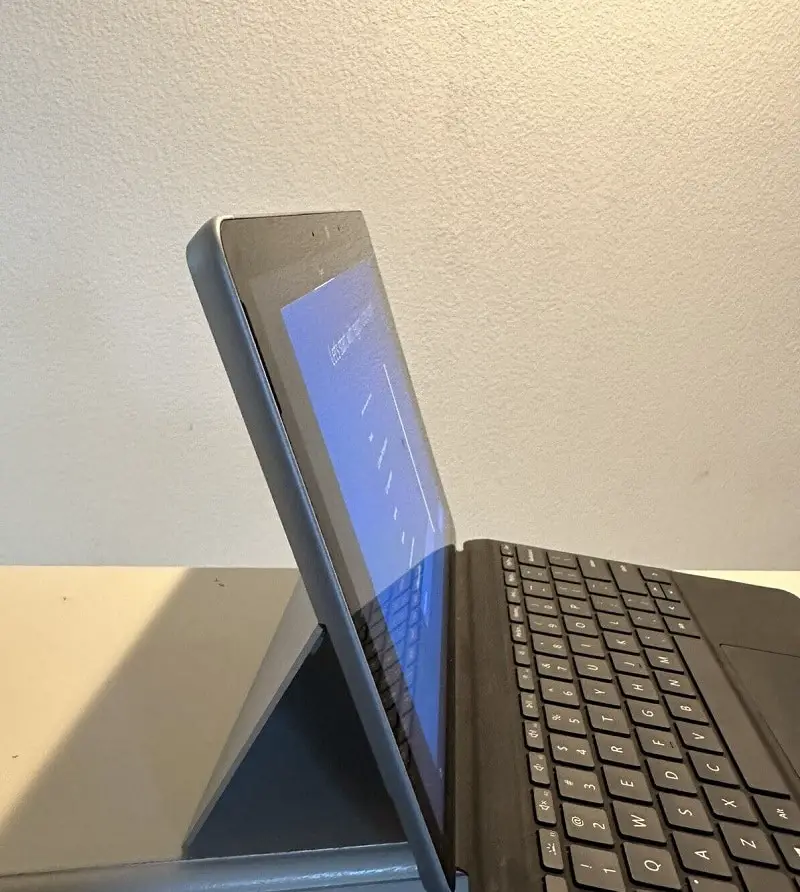
As far as aesthetics are concerned, this tablet measures a significant 9.65 x 6.90 x 0.33 inches. However, it weighs a manageable 1.2 pounds and comes equipped with an extensive connectivity suite. And the suite includes Type-C and Type-A ports, Wi-Fi 6 standard, BT 5.0, and a surface connect port for pairing a backlit keyboard if required.
Battery & Other Features
Microsoft promises 10 hours of battery backup and also lets you in on excellent stylus compatibility, a 5MP front shooter, and an 8MP rear camera unit.
Conclusion
If you are interested in a portable 2-in-1 with Windows functionality, it is better to rely on the Surface Go 2, courtesy of its reliable chipset and pocket-friendly pricing. And it is the value itself that sets it apart from other tablets on the list.
- Power-efficient chipset
- Fast SSD
- Bright screen
- Several ports
- Wi-Fi 6 support
- Chunky and thick
- Surface Pen needs to be purchased separately
6. Best Value for Money: CHUWI Hi10 X
While the Microsoft Surface tablets are extremely resourceful to a video editor, they do not always offer a PC-like editing experience. You need to invest separately in the accessories. The CHUWI Hi10 X changes all that by coming across as a powerful tablet that even doubles down as a 2-in-1, courtesy of the bundled accessories.
Why is it suited for video editing?
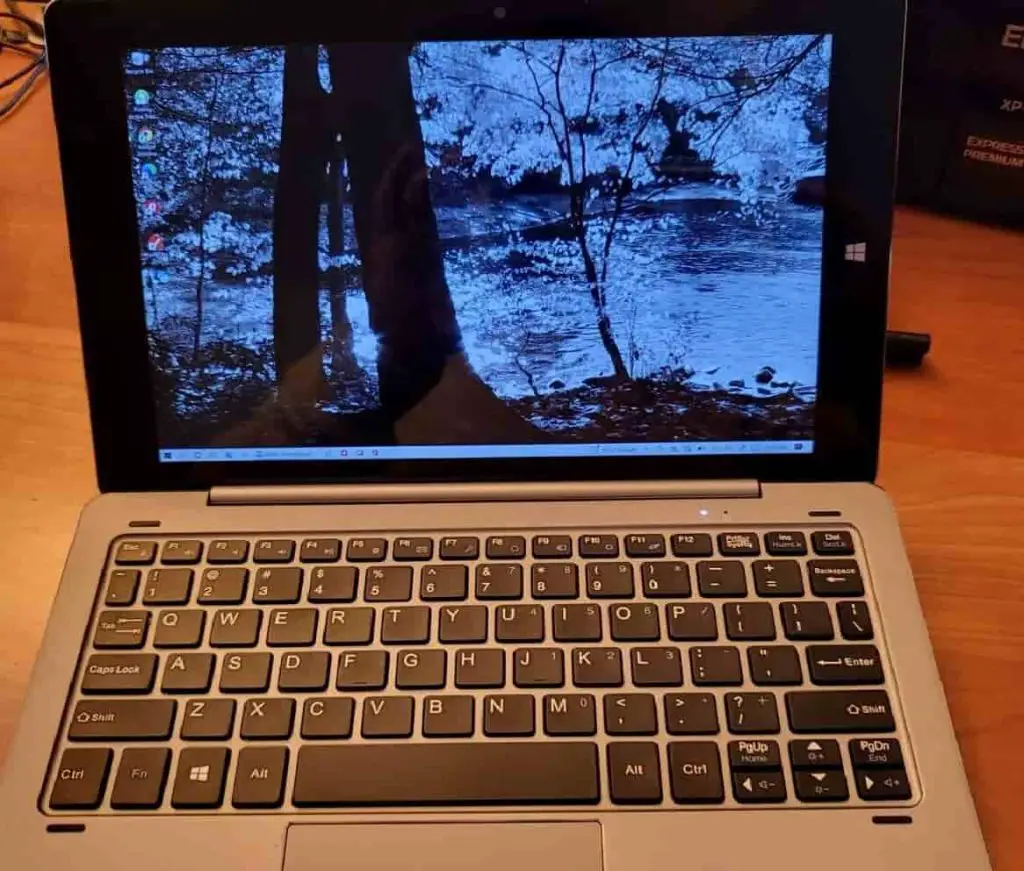
The Hi10 X runs the Womdershare Filmora like a pro, allowing you to make the most of the 10.1-inch screen. Coming to the resolution, it exhibits 1920 x 1200 pixels, whereas the aspect ratio is set at 16:10, making the videos come to life after getting edited.
However, it is the processing setup that makes quite an impression, courtesy of the Intel N4120 chipset. The processor supports text-based editing, 4K editing, audio mixing, scene detection, video stabilization, and more over Filmora, with adequate support from the Intel UHD GPU. Assisting the CPU is 6GB RAM and a 128GB storage unit that boots up the Windows 10 OS and other apps in virtually no time.
Design & Connectivity
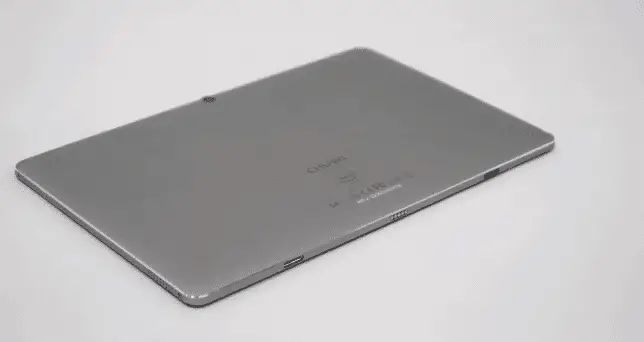
CHUWI manages to put together a metal-clad structure that weighs 1.2 pounds and measures 10 x 6.72 x 0.26 inches. Connectivity doesn’t take a backseat as the Hi10 X makes room for an HDMI port, 3.5mm jack, Type-C port, and a Type-A slot.
Battery & other Features
You get 6 hours of battery backup followed by a bundled HiPen stylus, ergonomic keyboard, a couple of 5MP and 2MP standard shooters.
Conclusion
The CHUWI Hi10X is a highly productive 2-in-1 that runs Filmora with ease, offers a PC-like experience, and allows you to make the most of the bundled resources. And it is resourceful that sets it apart from the rest of the competition.
- eMMC storage is fast
- Bundled accessories
- Bright screen
- Laminated display for better outdoor performance
- Not the most powerful GPU
- Multi-track editing isn’t as smooth
7. Best Budget Option: Vastking KingPad M10
If you prefer budget tablets that cost below $200 over the more premium options, you can opt for the VastKing KingPad M10 right away. And if you pit it against the older and more powerful K10 Pro, the KingPad M10 manages to edge past, courtesy of the 4G LTE support that lets you stay connected to the internet even without a dedicated wireless connection.
Why is it suited for video editing?
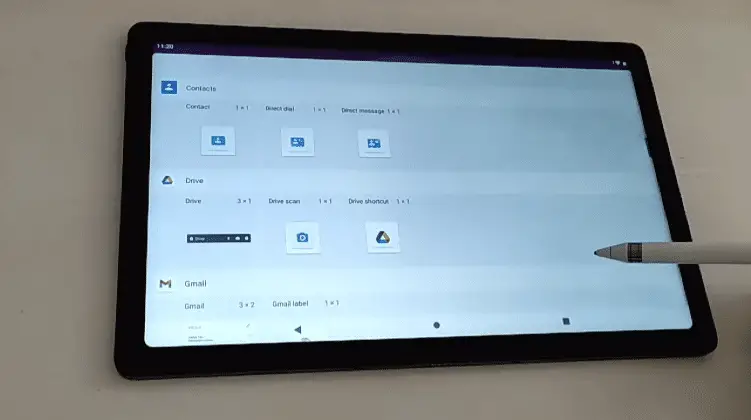
First of all, it is the 10.3-inch screen that makes quite an impression, courtesy of the bright 2K screen. The tablet sports a pedestrian aspect ratio of 16:9, which is still good enough to view videos in the landscape mode.
Powering the tablet is an Unisoc T618 chipset that can help you run KineMaster, Quik, and other video editing apps relatively smoothly. Plus, there is 4GB RAM and a 128GB storage unit to help you with multitasking and storage.
Design & Connectivity
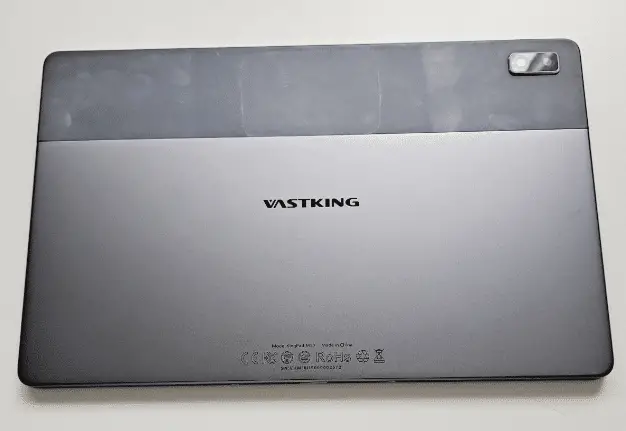
The 0.99-pound KingPad M10 is made of plastic but manages to put together some metallic undertones. As far as dimensions are concerned, the tablet measures 9.7 x 6.1 x 0.3 inches. Next in line is the connectivity suite that involves a dedicated SIM card slot, Wi-Fi AC support, and a Type-C port.
Battery & other Features
Despite being a budget tablet, the M10 offers 12 hours of battery backup. And on top of that, you get hold of a 13MP rear and a relatively clear 8MP selfie camera.
Conclusion
The King̦Pad M10 is an affordable tablet for video editing that can make life easier for hobbyists and casual video editors. And its ability to offer over 10 hours of backup makes it an asset worth having.
- Powerful chipset
- LTE support
- Light and portable
- LTE support
- Accessories need to be purchased separately
- Not meant for professional-grade editing
Frequently Asked Questions
Yes, you can most certainly edit videos on a tablet, provided the device has a decent chunk of RAM, a massive storage space, say 128GB, and a responsive GPU in place. And while a stylus might help, it isn’t always mandatory.
If you want to use a tablet for editing videos for YouTube, I would recommend getting an iPad Pro. An iPad lets you use the LumaFusion app with perfection, allowing you to use a multitrack editor and 4K editing support. Plus, you can then directly export and upload to the requisite platform.
Yes, iPad Pro is a great video editing machine for professional and casual video editing alike. While it lets you manage speed controls and transitions with ease, the powerful M1 chipset even assists you with color correction, title creation, and Effect integrations.
You need to be platform-specific if you want to zero in on the best apps for video editing. For Windows users, Filmora and VideoPad come across as the best choices. However, if you are into Android tablets, I would recommend checking out KineMaster and FilmoraGo. iOS evangelists can opt for iMovie and LumaFusion. And finally, Adobe Premiere Pro, Rush, and Quik offer the best cross-platform support.
Verdict
Every tablet mentioned on the list is good enough for a specific breed of editing apps. However, for a newbie and even an experienced PC-specific video editor, finding the right tablet for video editing can be difficult. Therefore, I have prepared a curated list to help you choose better.
- If you want to edit videos in a professional capacity via apps like Premiere Pro, Filmora, and more, the Surface Pro 7 from Microsoft is worth looking at.
- In case you want something to help you edit 4K videos for YouTube, the Apple iPad Pro is the best bet in plain sight.
- Also, if you want a device for standard social media video editing and more, the Lenovo Tab P11 Plus makes quite an impression.
- Finally, budget seekers who still prefer a PC-like performance and apps like Filmora can consider the CHUWI Hi10 X.
But this is more of a tentative list, and you are always free to pick something up else from the selection, depending on the budget, skill sets, and requirements.
Recommended Articles:










Leave a Reply